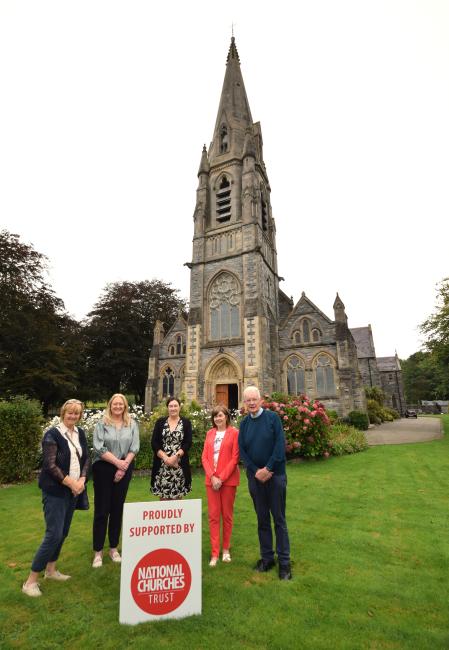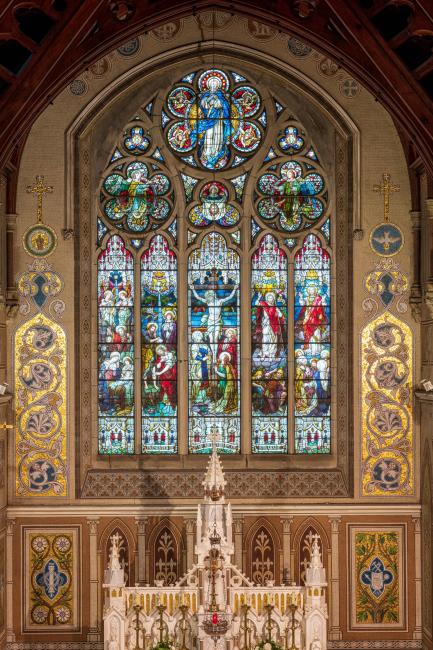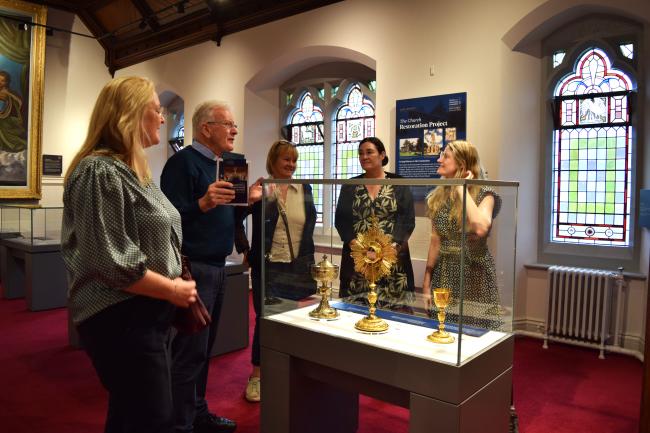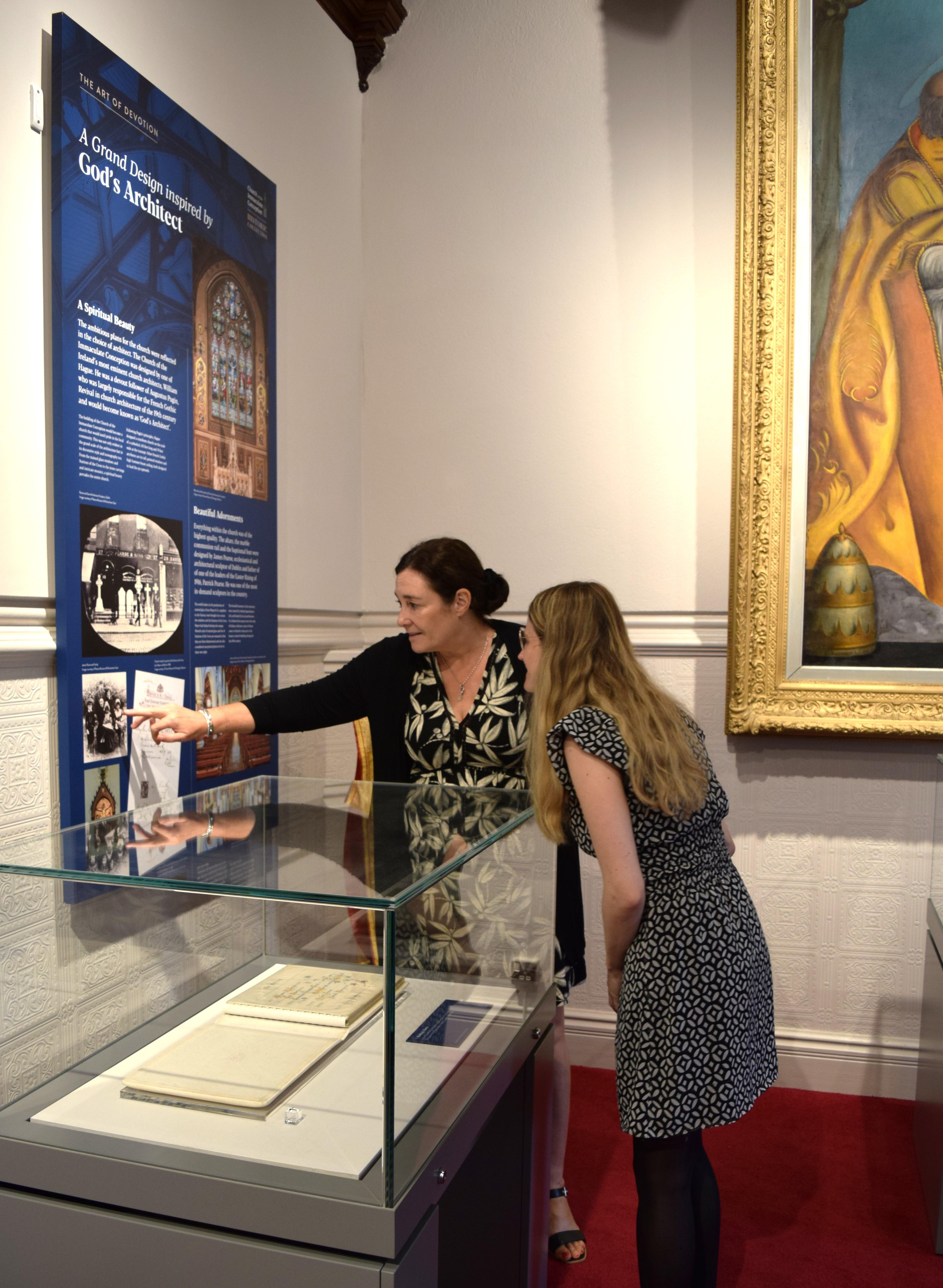Churches, chapels and meeting houses are the guardians of generations of local history. Not only are they treasure troves of art through the ages and keepers of family records, but brick by brick, the buildings have their own story to tell. And this amazing heritage is too precious not to be shared and enjoyed by all. So, how do you get started? Let us head to Northern Ireland, where the team at Strabane Church of the Immaculate Conception share how they turned their historic church into a visitor destination.
Heritage for all
In 2021, Strabane Church of the Immaculate Conception in County Tyrone began an urgent repair project at their Victorian Grade B+ listed building and through it grew a project to create a museum inside it, telling the history of the building and those who have used it.
In 2022, the church attracted more than 100,000 visitors and started running guided tours supported by a fabulous team of dedicated volunteers. The tourism boost has also benefited the local economy. And in 2023, the church took home the Northern Ireland Open for Visitors Award from the National Church Awards.
“This is all about the community. This is where it starts. No point in us putting on a new roof, restoring stained glass windows or anything else unless it's going to be properly used by the community, and not just the community of Roman Catholics,” shares Roisin, part of the project team at Strabane, who works at the award-winning Tower Museum in Derry/Londonderry.

Finding stories to tell
“I've been fascinated by this church since I've been a child,” explains Roisin. “I remember with my dad coming down and doing projects about it and to actually come back now and curate and to do all this work has just been an absolute honour.”
Roisin began by auditing the objects and artefacts that the church already had, so she could build a picture of what she was working with.
Next came an interpretation plan of what the structure of the museum would be. The interpretation is a way of explaining your story and the meaning of not just your church, but the objects inside and outside of it.
“[The interpretation] was very much rooted in, I suppose, the history and the origins of the church, as well [as] about the people, the community and local places,” says Roisin.
“We highlighted particular individuals, like William Hague who was the architect, a very prolific architect in Ireland.”
As part of the project, Roisin contacted the families of people who donated large sums of money to the church. This included Patrick McMenamin, who provided money for the East Window in the church – a beautiful Mayer of Munich stained glass. By contacting the families, Roisin was able to get more information about the windows and photos of Patrick. These help build up a story around the windows that can be shared with visitors.

Recruiting volunteers
“It’s really important that you're always keeping people informed of what's happening,” adds Mary, another member of the project team at Strabane.
Throughout the repair work the church was undertaking, as well as setting up the museum, the church never stopped updating the community with how they were getting on through Facebook.
This meant that when the time came to recruit volunteers, they already had channels in place through which they could reach out to people.
After putting a callout on Facebook, volunteers were recruited. This included four young people who were going to or had completed museum studies at university and several older local people, who were keen to get involved.
The church then got the volunteers trained to deliver tours of the building. The training came with a proper qualification, which has been useful for volunteers to add to their CVs.

Inviting people in
The church tours have been a huge success.
Initially, groups within the church, such as the singing group and the men’s and women’s groups, were targeted. This meant the tour guides always had people to show around within time slots. And at the end of mass on Sunday’s, Father Boland would also invite people to stay behind for a tour. This helped build more momentum.
The church also produced leaflets advertising their church museum tours, which sit in the local tourism offices. This helps attract visitors near and far into the church.
There are plans to involve local schools by putting on tours for the school kids and also talks on conservation and heritage skills, to help give young people advice on different career options and apprenticeships.
“There's a whole realm there of possibility and not just with the kids here in the primary, but in our post-primary,” explains Father Boland.
Feeling inspired? Take a look at our advice below to help you create a museum in your church.
For Churches: top tips for your place of worship
-
Start by researching your building and deciding what stories you want to tell. We recommend including your social heritage and people connected with your building, as well as art and architecture.You can find our tops tips and advice on everything from interpretation to writing a guidebook for your church here.
-
Share what you’re doing. Take photos and videos and update your website and social media with the progress you’re making. Make sure opening times for your church are easy to find, as well as ways that people can get involved with the museum.
-
Get your community involved. From donating artefacts and photos, sharing their memories of the church, to signing up as volunteer tour guides, there are lots of ways to involve your local community.
-
Work with your local and regional tourism organisation. They can help promote your church museum to visitors near and far. If you’re unsure where to find yours, search online for ‘visit (your county)’ or pop into a local visitor centre and ask. Your local authority might also have a tourism officer who you can engage with. Find out more information about how tourism works across the UK here.

